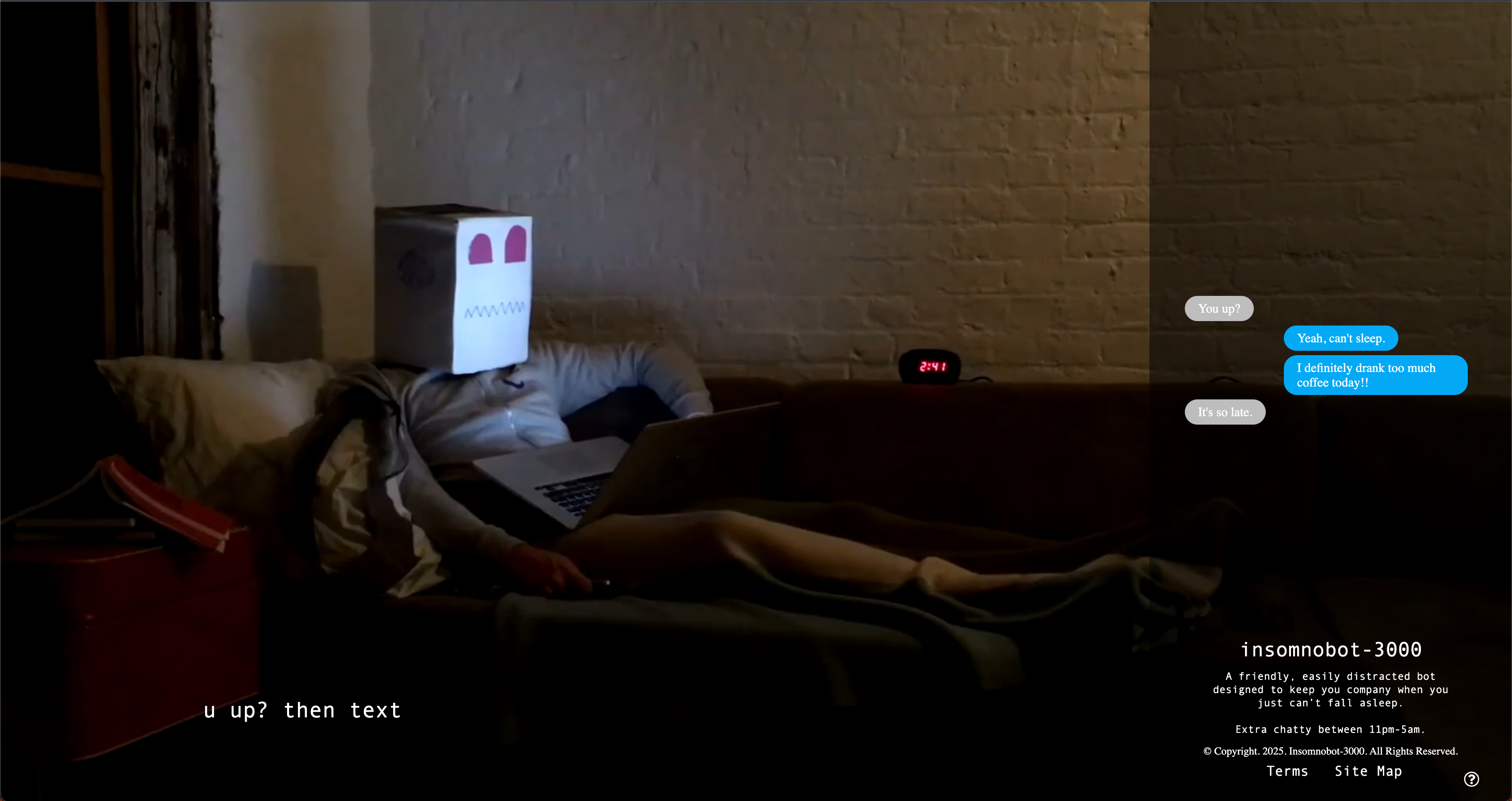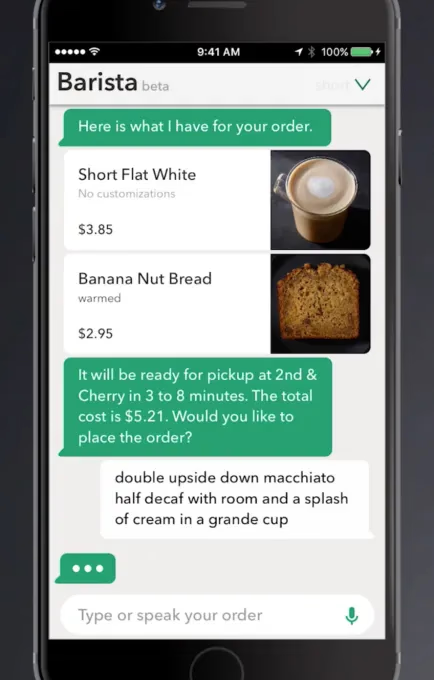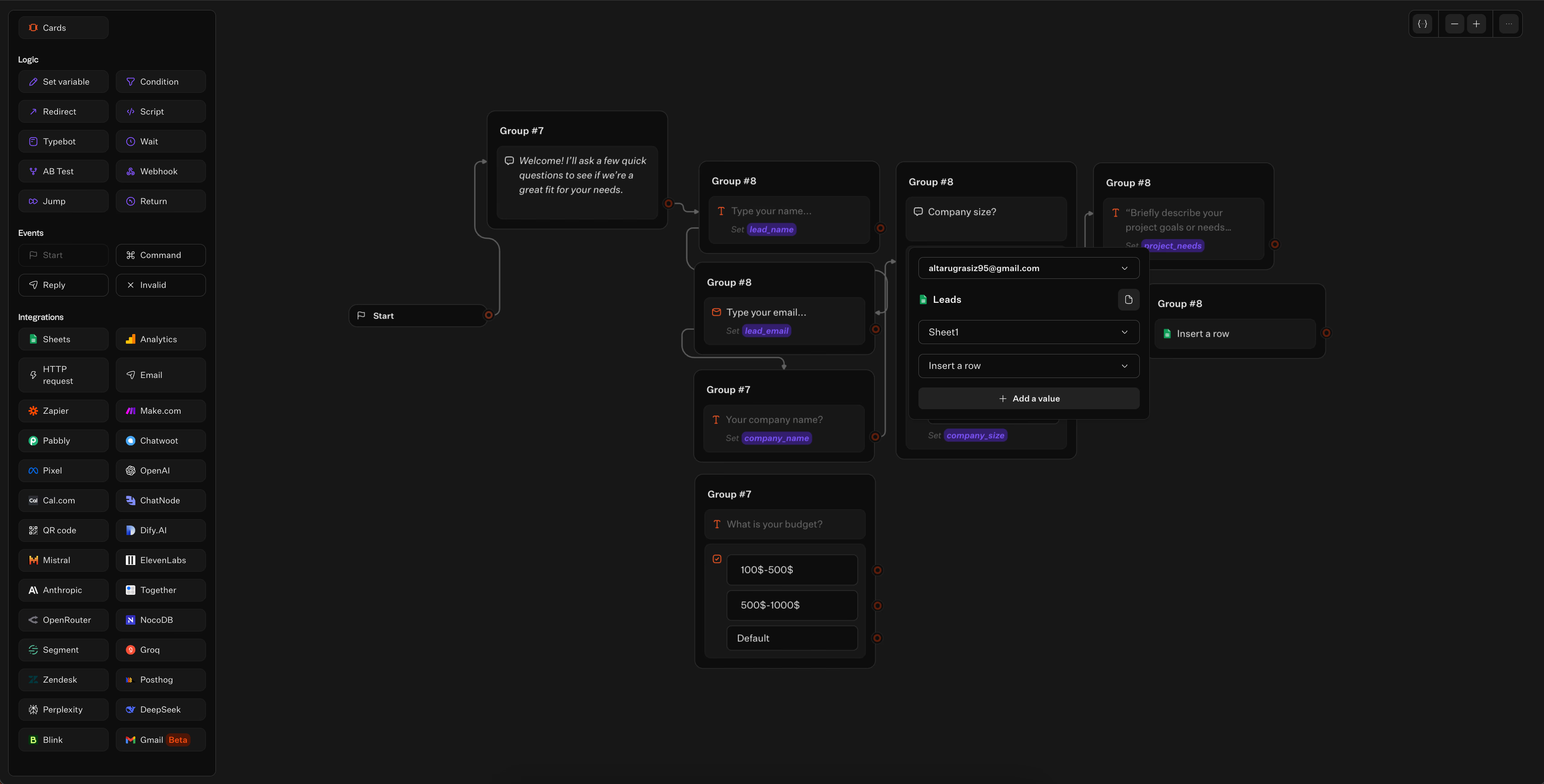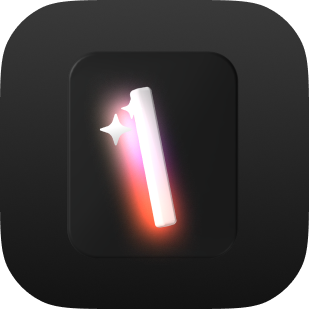Customer conversations now happen in chat apps, at 2 AM on WhatsApp, during lunch on Facebook Messenger, and between meetings. Email and display ads are easier to ignore. Chatbots connect with people where they already spend time and respond instantly.
Gartner predicts that by 2027, chatbots will become the main customer service channel for about 25% of businesses. Brands like Domino’s and Starbucks are already building full experiences around chatbots.
This change is not about replacing humans. It’s about delivering speed, relevance, and continuity. Plus, responding conversationally while remembering preferences and feeling helpful, not robotic.
Real-World Chatbot Marketing Examples That Convert
The most successful chatbot implementations share a common thread. They solve real customer problems while driving measurable business results.
Leading brands have transformed how they connect with customers through intelligent automation. From enterprise AI platforms to beauty retail and fitness membership engagement. Here's how they're doing it, and what you can learn from their approaches.
1. IBM Watsonx Assistant
Represents the enterprise-grade approach to conversational AI, powering customer service operations for major global brands.
Built on large language models and advanced natural language processing, Watsonx handles everything. From lead qualification to post-purchase support across multiple channels.
A leading RV retailer Camping World deployed their Watsonx-powered bot "Arvee". Their goal was to manage the surge in customer inquiries during the pandemic.

The results were striking. Customer engagement jumped 40%, efficiency increased 33%. The bot successfully captured after-hours leads that would have otherwise been lost.
What makes IBM's approach particularly powerful is its enterprise-ready infrastructure. This infrastructure offers the security, scalability, and integration capabilities. Large organizations require these while maintaining conversational quality that feels genuinely helpful.
💡 Want to boost conversions with your chatbot? Learn how to build a lead generation chatbot that qualifies prospects automatically and delivers warm leads to your sales team 24/7.
2. Sephora's Virtual Artist
In the beauty industry, Sephora's Virtual Artist has redefined how customers discover and purchase makeup online. The AI-powered tool combines augmented reality with computer vision to let shoppers virtually try on. They tried thousands of products in real-time.
It delivers remarkably accurate previews that mirror in-store testing. Sephora integrated this across their mobile app, website, and even in-store kiosks, creating a seamless omnichannel experience.
The Virtual Artist increased add-to-basket rates by 25% and boosted makeup conversion rates by 35%. More importantly, it extended average app sessions from 3 minutes to 12 minutes. Users engaging 10 times more with virtual try-ons year-over-year.
The broader impact is this. Sephora cut product returns by 30% while building an engaged community that shares their virtual makeovers across social media. They generated organic buzz and traffic.
3. Casper's Insomnobot
Casper created Insomnobot-3000 to keep insomniacs company at 3 AM. Instead of pushing sales, it offers conversational support that can naturally lead to product suggestions when appropriate.
The bot focuses on building relationships rather than immediate conversions. A perfect example of chatbot best practices in action.

It appears as a chat interface on Casper’s website. No app download or signup is needed, allowing anyone awake and browsing to start a conversation instantly.
Casper reports increased sales and higher customer satisfaction, though exact numbers remain confidential. The bot generated strong organic social buzz, with users sharing screenshots and stories. This amplified brand awareness.
4. Turtle Bay Resort
When Turtle Bay Resort in Hawaii needed to modernize its guest experience and streamline its operations. They turned to chatbot automation.
The hospitality brand faced a logistical challenge. High volumes of guest inquiries across multiple channels like website chat, live chat, Google Business Messages. Plus, a new reopening environment.
Their chatbot strategy unified all guest communication channels. It automated inquiries and made direct bookings easy. It also captured leads around the clock.
They set up chat flows on the resort website and messaging channels. Guests could check availability and get quotes. They could also book directly and ask questions through the chatbot. No phone calls, no waiting.
The results transformed their operations. In a 7‑month period they captured 510 booking inquiries and 23 group‑leads via the chatbot. Direct booking conversion increased by more than 50% and ROI was over 200×.
Turtle Bay met guests where they already spend time. They removed friction from the booking process. They also maintained a personal, timely touch, even through automation.
5. The Wall Street Journal Chatbot
The Wall Street Journal uses a chatbot to deliver personalized news within messaging apps. It shifts news distribution from static web pages to conversational streams where readers already spend time. This marketing automation chatbot approach transforms content delivery.

The bot brings curated content into messaging streams and captures preferences. This allows the newsroom to serve more relevant stories based on user interests.
It won the 2018 Webby Award for Best Chatbot in News and Politics. Users engage more with the chatbot than typical website visitors. It reduces friction in finding content and encourages regular news consumption.
The chatbot lowers subscription barriers by offering immediate value through bite-sized, personalized content.
Interaction data gives real-time insight into audience interests, helping editors adjust content faster.
6. Starbucks Barista Bot
Starbucks transformed ordering with the Barista Bot. They created a conversational, multi-modal experience that reduces friction and fits into customers' daily routines. This AI chatbot delivers personalized experiences at scale.

The bot lives in the Starbucks mobile app and integrates with voice assistants like Amazon Alexa and Google Assistant. It allows customers to order and pay for highly specific drinks, customized by milk type and temperature.
You can avoid navigating menus or waiting in line. It syncs with Starbucks Rewards so orders, points, and offers appear together. The bot supports in-store staff by removing order-taking friction during peak times.
By 2019, the Barista Bot handled 10% of U.S. mobile orders, representing millions of transactions. Users spent about 20% more on average than other ordering methods.
It earned high user ratings (4.8/5 in the App Store) and improved customer satisfaction. Operationally, it reduced order-taking interruptions for baristas and ensured smoother order flow during peak times.
Across these diverse examples several patterns emerge. The most effective chatbots solve specific friction points in the customer journey.
They meet users on their preferred platforms rather than forcing downloads or redirects. They balance automation with personalization by remembering context and preferences. And critically, they know when to hand off to humans for complex issues that require empathy or expertise.
Chatbot Marketing Use Cases: From Awareness to Advocacy
Before diving into real-world examples, it's important to understand where chatbots fit in your marketing strategy. Modern chatbots serve distinct purposes at every stage of the customer journey. From capturing cold traffic to turning buyers into brand advocates.
Here are three core use cases that drive measurable results:
Lead Generation and Qualification
Not every visitor is ready to buy. Lead qualification chatbots separate casual browsers from sales-ready opportunities by asking strategic questions. These questions are about budget, timeline, pain points, and team size.
They score responses in real time, routing high-value leads to sales while nurturing lower scores with educational content. Filtering prospects so your sales team focuses only on real opportunities.
Product Recommendations and Guided Selling
Customers often know the problem but not the exact product. Recommendation quizzes ask about goals, constraints, and must-have features. Then use conditional logic to return 2-3 product matches with images, descriptions, and purchase links.
This reduces overwhelm and guides decision-making for both simple and complex catalogs, turning browsing into buying.
Abandoned Cart Recovery
Cart abandonment bots trigger when visitors leave checkout, reopening dialogue with "Still thinking about these items?". They show cart contents, address objections about shipping or returns, and qualify hesitation before offering discounts.
This personalized approach recovers sales that generic email reminders miss. Also, it converts up to 3x more abandoned carts than traditional email campaigns.
Build Your Own Marketing Chatbot with Typebot
You don’t need large budgets or an engineering team to launch a conversion-focused chatbot. With a clear use case and the right platform, conversational experiences become a strategic tool instead of a technical burden.
Why conversational marketing outperforms traditional forms
Conversational flows collect information naturally. Instead of overwhelming visitors with multiple fields at once, a bot asks the right question at the right time. This helps users progress smoothly without feeling interrupted.
Conversational forms achieve 2 to 3 times higher completion rates than static forms. Because, each step logically follows the previous answer.
Bots also adapt in real time. First-time visitors, returning customers, and enterprise prospects receive tailored paths instead of a generic form.
Deploying chatbots in familiar places like chat widgets, WhatsApp, or social DMs reduces friction and expands reach. This avoids forcing users to install apps or complete long forms.
How Typebot simplifies chatbot creation for marketers
Typebot’s visual builder offers drag-and-drop blocks for text, inputs, buttons, and conditional logic. This lets non-technical teams design flows quickly.

It includes native integrations with Google Sheets, webhooks, CRM platforms, email notifications, calendar booking (Cal.com). Also, OpenAI for smarter responses, and Stripe for in-bot payments.

You can embed rich media like images, videos, or PDFs, and customize colors, fonts, avatars, and messaging style.
Flexible deployment options include widgets, popups, full-page experiences, shareable links, or API/WhatsApp delivery.
Analytics features help you track drop-off points, completion rates, and export responses. You can also run A/B tests to improve performance continuously.
Getting started with your first marketing bot
Begin by defining one clear objective, such as:
- Qualifying leads
- Booking demos
- Recommending products
- Collecting feedback
Map the conversation on paper starting with a greeting. Then, followed by key questions, the desired outcome, and branches for common detours.
Build the “happy path” first. This should be a clean, frictionless flow from start to goal.
Then add branches for edge cases, like users not ready to buy, enterprise interest, or requests for help. Tag or route these appropriately.
Connect integrations early so captured data flows directly to your CRM, sheets, or email.
Test thoroughly by checking multiple paths, mobile responsiveness, and integration functionality. Iterate to clarify confusing steps.
Deploy your chatbot strategically where friction occurs, such as pricing pages, checkout, or feature pages. Monitor analytics and refine weekly.
Start small, focus on results, and improve over time. A well-tested chatbot will outperform an overbuilt one and provide a repeatable playbook to scale conversational marketing.
Final Words
The brands featured here prove that chatbot marketing delivers real results when done right.
The winning formula is consistent. Meet customers where they are, remove friction, personalize the experience, and match your brand voice. Whether you're selling pizza or sleep solutions, chatbots that solve real problems convert.
What makes chatbots powerful is their ability to scale personalization. Unlike static forms, they adapt in real time, guiding each visitor toward their best outcome based on their unique needs.
You don't need enterprise budgets to start. Platforms like Typebot let any marketer build conversion-focused bots without coding. Pick one clear goal, qualifying leads, booking demos, or product recommendations, and build from there.
The brands winning with chatbots didn't wait for perfect conditions. They started small, tested fast, and scaled what worked.
Your first bot doesn't need to be revolutionary. It just needs to solve one problem better than your current solution. Ready to turn conversations into conversions? Start building today.

Create fully customizable chatbots without writing a single line of code.
No trial. Generous free plan.